2017 may be the first year of mass production of electric vehicles (EVs). In 2017, a total of approximately 1.3 million EVs were sold in the global market; although only about 1% of the total passenger vehicle sales, EV growth was still as high as 57% compared to 2016, and this rapid momentum will continue.
If an electric car wants to enter the daily life of the public, it must ensure that the cruising range can reach a certain extent, and the vehicle manufacturer can then concentrate on cost control. We have found that if the average cruising range of an electric vehicle exceeds 300km, the vehicle manufacturer can concentrate on entering the low-price segment market. This also means that the long-awaited low-priced electric vehicle market (ie, the "popular electric car") may soon be on stage.
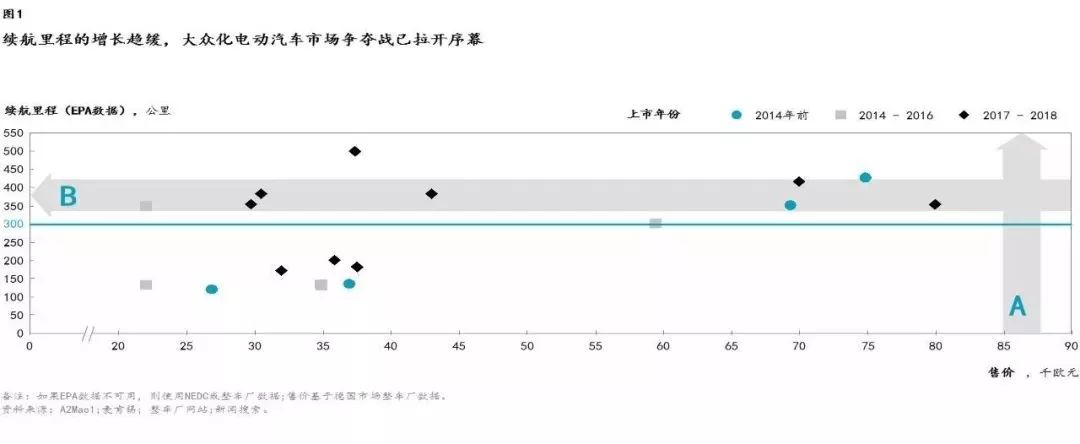
The current profitability of mass-produced electric vehicles is still weak, which makes many practitioners feel anxious. At present, most of the electric car models being sold, even if they contain upgrade options, the profitability performance is still unsatisfactory, especially when compared with mature fuel vehicles.
Four Design Principles of Electric Vehicle Industry
Aiming at the profitability of electric vehicles, as well as rapidly evolving electric vehicle technologies and new design trends, the McKinsey Center for Future Mobility (MCFM) and A2Mac1 have collaborated to jointly dismantle 11 models of electric vehicles. Conducted research and benchmarking. Based on the relevant dismantling and benchmarking analysis, this paper proposes four design principles that practitioners in the electric vehicle industry should pay attention to.
Principle 1: Build a Flexible Native EV
Despite the higher initial investment in R&D, the original electric car platform will be superior to non-native models in many dimensions.
The original models can completely design the entire vehicle architecture around the concept of electric vehicles, and abandon the traditional internal combustion engine components, which means less compromise and greater flexibility.
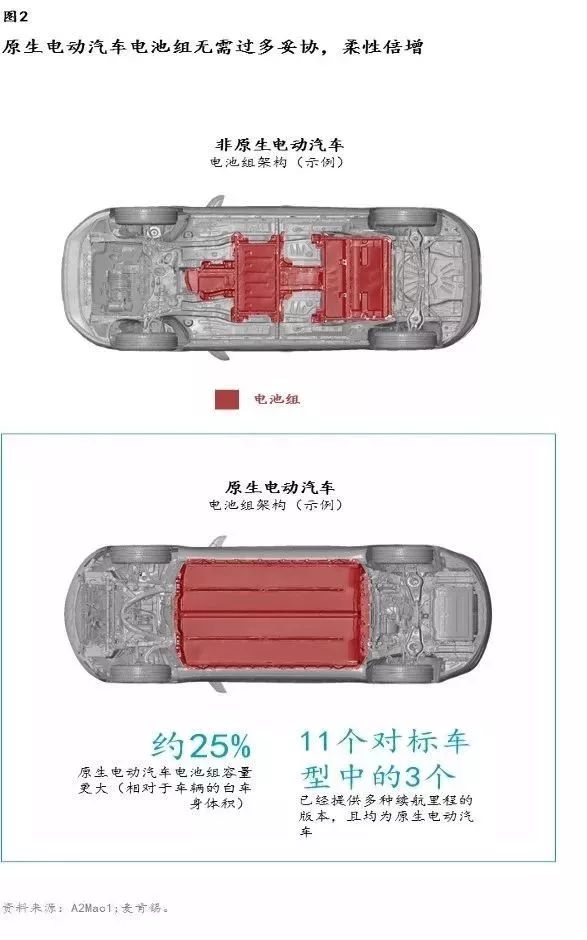
Since the original electric car does not need to compromise on the entire vehicle architecture and white body design, it can accommodate larger Battery packs to support longer cruising range. Compared to non-native electric vehicles, the battery capacity of a native electric vehicle has increased by an average of 25% (as opposed to the body-in-white volume).
In addition, some electric vehicle manufacturers are trying some common means of fuel vehicle models, such as providing a variety of powertrain options. The flexible characteristics of the original electric vehicle play an important role in this regard: for example, the battery pack can accommodate different numbers of batteries while keeping the external shape unchanged; at the same time, the modular design of the drive train also supports production on the same platform. Drive, pre-drive or four-wheel drive and other different drive models.
Principle 2: Unremittingly pursue the integration of EV power systems
The trend toward integration of electric vehicle powertrains is in the ascendant, and many components of power electronic systems are being increasingly compact, while being continuously integrated into a smaller number of modules.
A good observation of the improvement of the integration level is the arrangement of the wiring harness that connects the main components of the powertrain (ie, batteries, motors, power electronics, thermal management modules, etc.). We have found that the weight and number of wire harnesses in the latest electric vehicles are generally reduced compared to previous models, which indicates an increase in the level of integration.
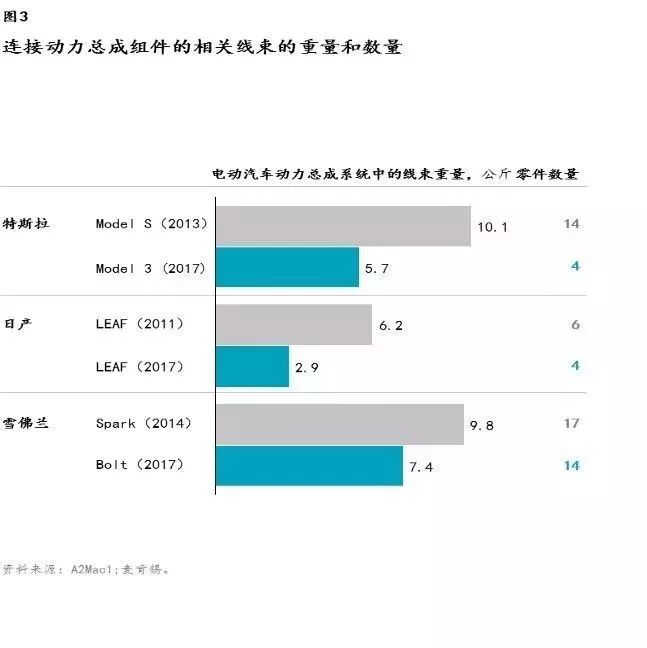
In addition to the physical integration of the main powertrain components of electric vehicles, we have also observed that it has begun to apply simplified and efficient thermal management solutions. It must be noted that although some vehicle companies have adopted integrated measures, some manufacturers still rely on multi-system design solutions (see Figure 4).
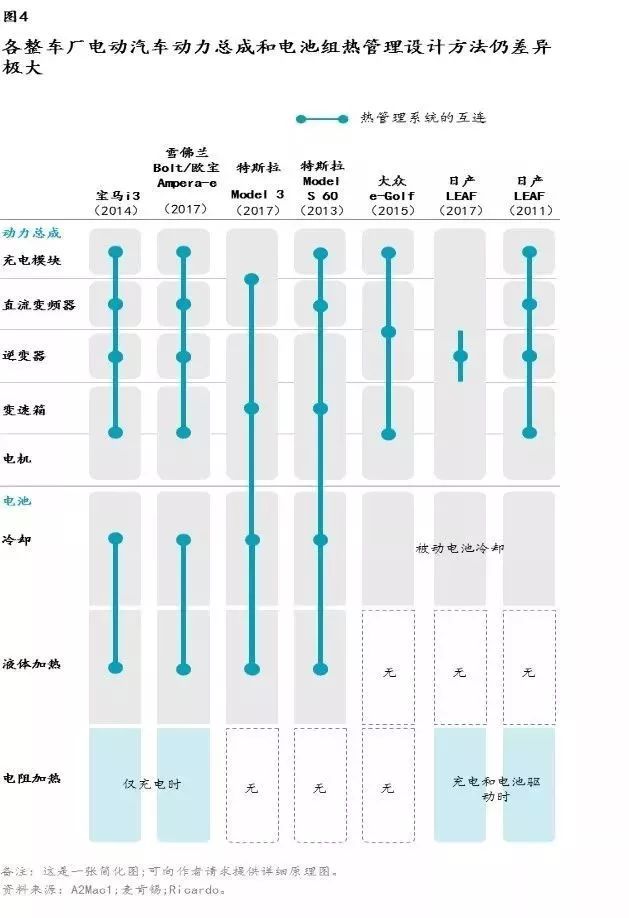
As EV-related components are usually smaller, the available space at the underbody and front and rear luggage compartments is larger, so the design freedom of electric vehicles is greater than that of traditional fuel vehicles. Here is just one example to show the differences in the structure of electric vehicle powertrain: Opel Ampera-e has a typical fuel vehicle body and layout, and its power electronic components are also placed in the internal combustion engine; otherwise Tesla Model 3 will be large Some of these components are located behind the battery pack and the rear axle (see Figure 5).
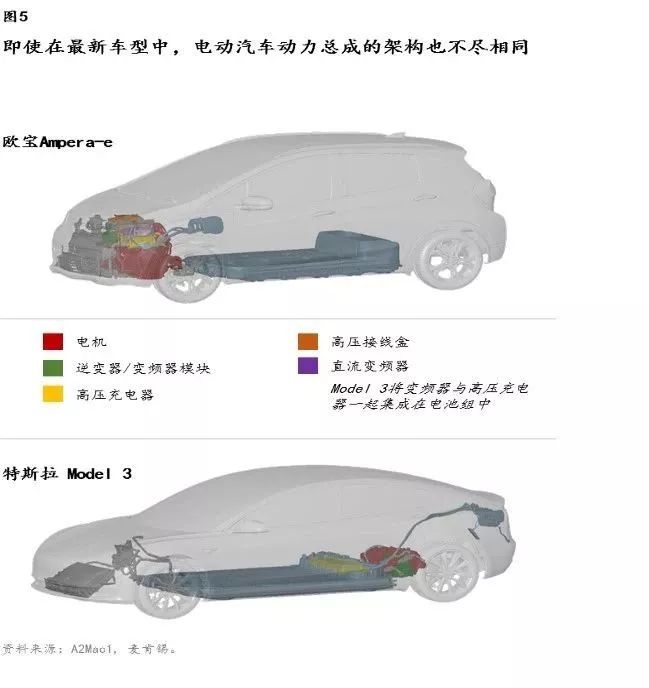
It is worth noting that the high degree of freedom of the layout of the powertrain system can make the vehicle performance more diversified. For example, there is the option of leaving room for more baggage capacity, or lowering the center of gravity to improve driving performance.
Principle 3: Staying ahead of the competition in technology
Electric vehicle manufacturers are responding to customer needs through more powerful assisted driving functions (ADAS), a more optimized human-machine interface, and a richer infotainment system. The increase in computing power is the key to achieving this transformation. Traditional cars usually have many decentralized standardized electronic control units (ECUs) to achieve digital control of different assemblies; but the latest electric cars seem to rely more on increasingly centralized computing capabilities.
Taking ADAS technology as an example, ADAS requires a large amount of computing power to process various sensor signals in real time. If the latest ADAS solutions (such as adaptive cruise, automatic braking and even driverless technology, etc.) are placed under the background of ECU centralization, electric vehicles equipped with these ADAS technologies will be more economical than those equipped with similar ADAS technologies. The car will be more inclined to the ECU integrated route.
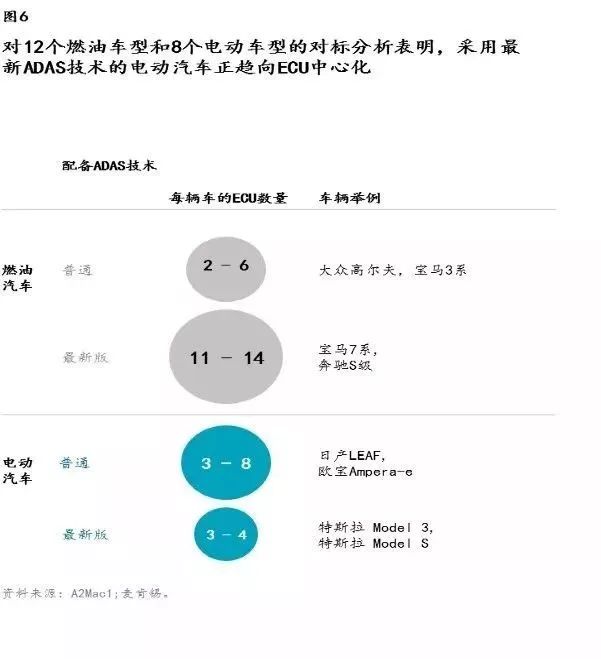
The decision by the automaker to adopt a centralized or decentralized ECU architecture will be a strategic issue that will be affected by various factors. A major factor driving the centralized architecture may be to “own†key control points in the car by becoming integrators, thus facilitating the development of more advanced software while opening up new revenue streams; for example, from wireless over-the-air (OTA) income.
In addition to strategic factors, the ECU architecture may also affect the vehicle's weight and cost. For example, a centralized architecture helps to optimize the cabling and procurement efficiency; at the same time the reliability of the centralized architecture is higher: because the centralized architecture requires a simpler protocol and fewer physical connections than a decentralized architecture, Reduce the possibility of errors.
In terms of development processes, the increase in the number of ECUs means that the cost of communication between different development teams also increases. The centralized architecture helps to streamline the development team's scale and development process and shorten the development cycle.
In addition, the centralized high-performance ECU is the highlight of the development of driverless technology, helping electric vehicles to have the ability to meet the potential needs of customers at an early date.
Needless to say, the choice of ECU architecture ultimately depends on the actual conditions of different OEMs. The centralized architecture requires that the vehicle manufacturers have strong integration capabilities; therefore, the centralization or decentralization will depend on the specific business conditions of different vendors.
Principle 4: DtC is king
The strict cost-based design (DtC) is becoming increasingly important for large-scale production of electric vehicles. Cost-effectiveness has always been the skill of traditional vehicle manufacturers and suppliers. They can take full advantage of their traditional DtC leverage to gain market leadership.
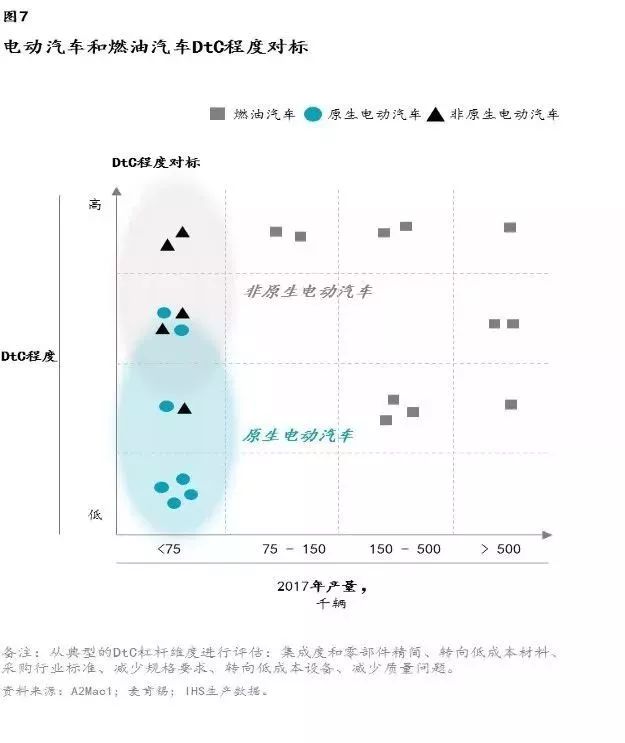
Benchmarking analysis shows that fuel vehicles and non-native electric vehicles seem to do better in DtC than the original electric vehicles. This is not surprising, as manufacturers of fuel vehicles and non-native electric vehicles continue to optimize their costs and may use a large number of highly optimized components from earlier models.
However, the latest local electric car may catch up. For example, taking advantage of the advancement of battery packs, primary electric vehicles are shifting from lightweight materials to more cost-effective material solutions (such as steel body in white); or adopting more stringent specification reduction plans (such as on the dashboard) Control elements and outlets, etc.); or investments in mass production processes, such as the use of stampings on seat structures rather than bending parts.
The Chinese market: Four major design principles for electric vehicles are being used
China is the world's largest electric vehicle market. The four major design principles discussed in this paper have all been applied to the Chinese market to some extent. E.g:
- Build a flexible native EV: Many new electric vehicle manufacturers in China, such as Weilai and Weimar, are competing to develop their own native electric vehicle platforms; and some companies, such as Weimar, have launched the same model for vehicles. A variety of range mileage (Weimar EX5).
- Unremitting pursuit of EV power system integration: SAIC Roewe's electric vehicle drive system highly integrates the design of the drive motor, reducer, and inverter, resulting in a more compact vehicle structure and higher drive efficiency.
- Staying ahead of the competition in technology: BYD recently announced that it will implement 10-in-1 control modules such as instrumentation, air conditioning, audio and smart keys on the latest e-platform electric vehicles.
- Cost-based design (DTC) is king: The price of the newly listed Weimar EX5 entry-level (300km) subsidy is only 110,000 yuan; the definition of accurate road-to-road product will be one of the key elements of EX5's low price. .
Outlook: Can the mass market for electric vehicles achieve profitability?
The four principles of electric vehicle design proposed in this paper help OEMs reduce the cost of electric vehicle manufacturing. We believe that focusing on simpler and more flexible native platforms, combined with innovative technologies and design methods, can solve the problem of profitability of popular electric vehicles.
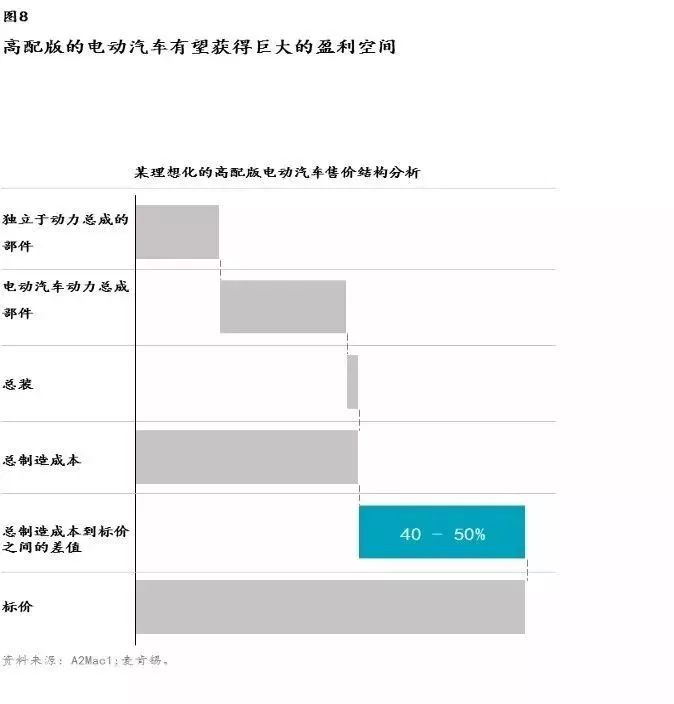
According to our analysis, the difference between the total manufacturing cost to the list price (including hardware and software matching costs, such as non-standard color, extended cruising range, and various software configurations) for the ideal high-end version of electric vehicles, It may account for about 40%-50% of the price, which is undoubtedly a considerable profitable space. Since the cost structure of EV non-powertrain components and assembly is not significantly different from that of fuel vehicles, the uncertainty in the development of the EV powertrain itself and battery costs is still the major cost factor for EVs.
Conclusion
All in all, an e-mobility era that is profitable and faces the general public is slowly kicking off - this is inseparable from the design trend of flexibility, integration, and maximization of customer value, and is also governed by the cost-effectiveness of scale production.
The major application of solar energy are as follows: (a) Solar water pumping (b) Solar led lights (c) Solar distillation (d) Solar portable power (e) Solar drying of agricultural and animal products (f) Solar Carport (g) Solar battery (h) Solar electric power generation (i) Solar thermal power production (j) Solar green houses.
Sunket is professional on supplying all these solar products
Solar Application,Solar Lights ,Solar Pump System,Solar Carport,Portable Power Station
Wuxi Sunket New Energy Technology Co.,Ltd , https://www.sunketsolar.com